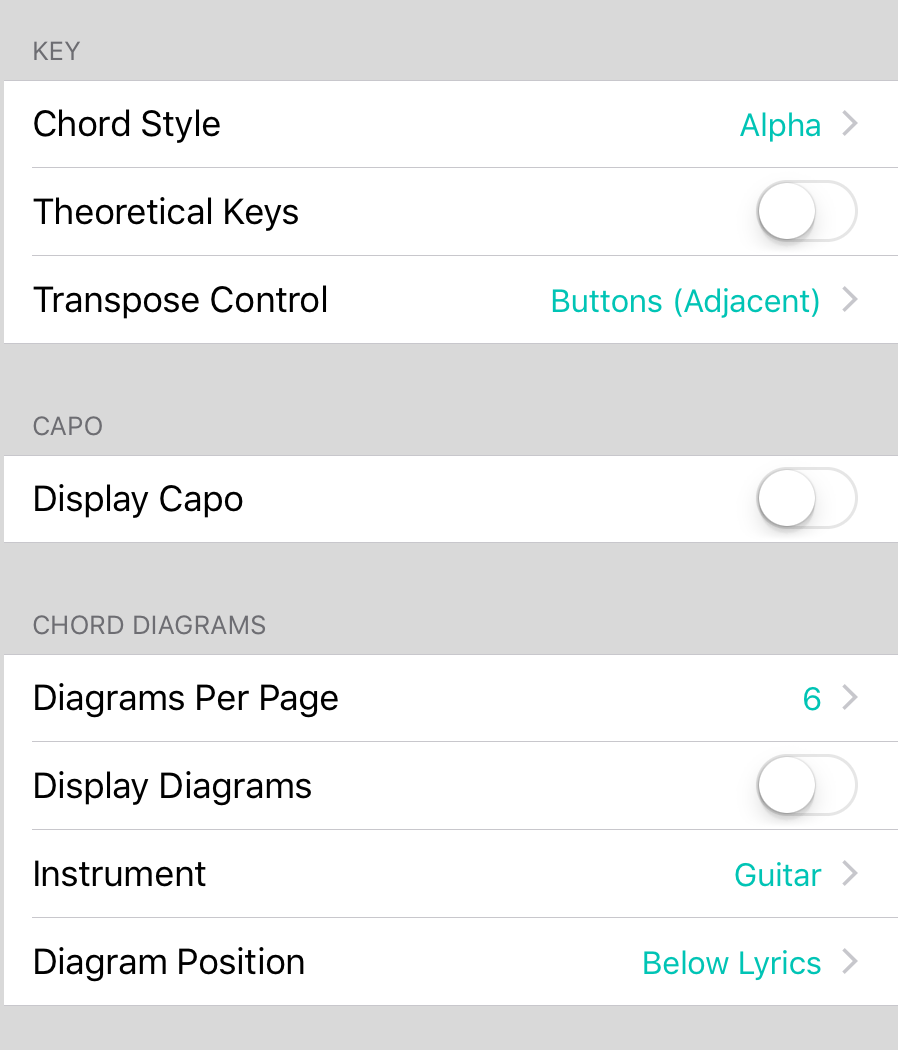User Manual
Chords

The chord section determines the default behavior and interface options for the Style Preferences Menu Chords tab.
Chord Style
This allows you to choose the default chord style for newly imported songs. You can choose from:
- Alpha displays chords as an alphabetic character (A-G) including enharmonic preference (sharp or flat). Default.
- Nashville displays chords as numbers (1-7) based on their position in the key.
- Roman displays chords as Roman numerals (I, ii, iii, IV, V, vi, vii) based on their position in the key.
- Italian displays chords as numbers using Latin (do, re, mi, fa, so, la, ti) based on their position in the key.
Theoretical Keys
The key chooser or slider contains the most common keys by default. If you would like to enable less commonly used keys, or keys that contain more than 7 sharps or flats, enable this setting. Default is off.
Transpose Control
Determines the user interface preference for key selection. Options include: * Buttons (adjecent) displays keys that are adjacent to each other according to the circle of fifths. (Default) * Buttons (chromatic) displays keys that are in chromatic/alphabetic order. * Slider uses the original OnSong slider interface control.
Display Capo
Determines if the capo should be turned on or off by default. The default value is off.
Diagrams Per Page
Determines the number of chord diagrams that should appear for the width of the page. When choosing piano diagrams, this number is effectively half as the diagram is twice the width of a standard diagram.
Display Diagrams
Determines if diagrams should be displayed on the chord chart by default. Default is off.
Instrument
Determines the default instrument to use when drawing chord diagrams. Options include Banjo, Bass (4-string), Bass (5-string), Guitar (Default), Mandolin, Piano, Ukulele, Ukulele (baritone).
Diagram Position
Determines the position of chord diagrams when enabled. Options include: Below Lyrics (default), Above Lyrics, and Within Lyrics.


